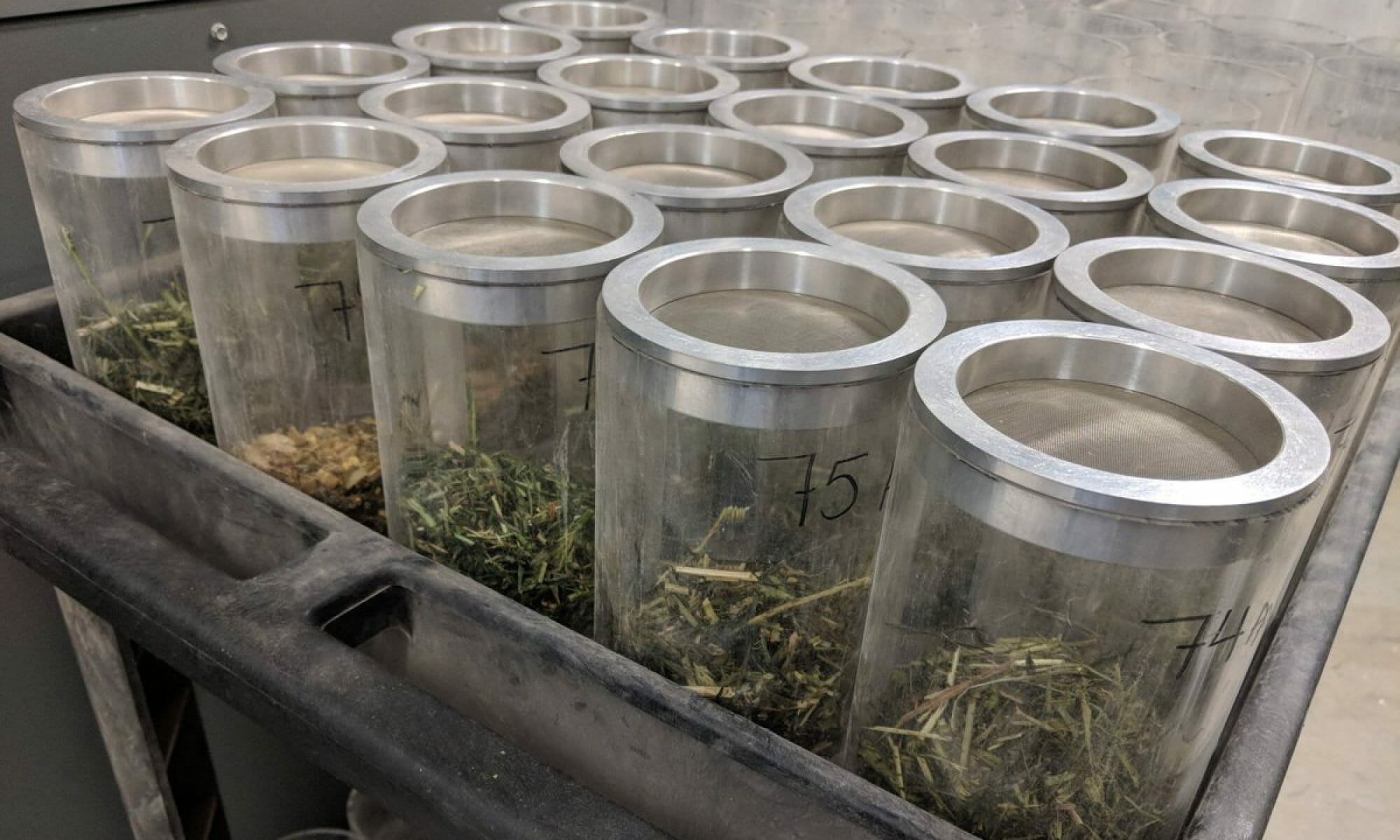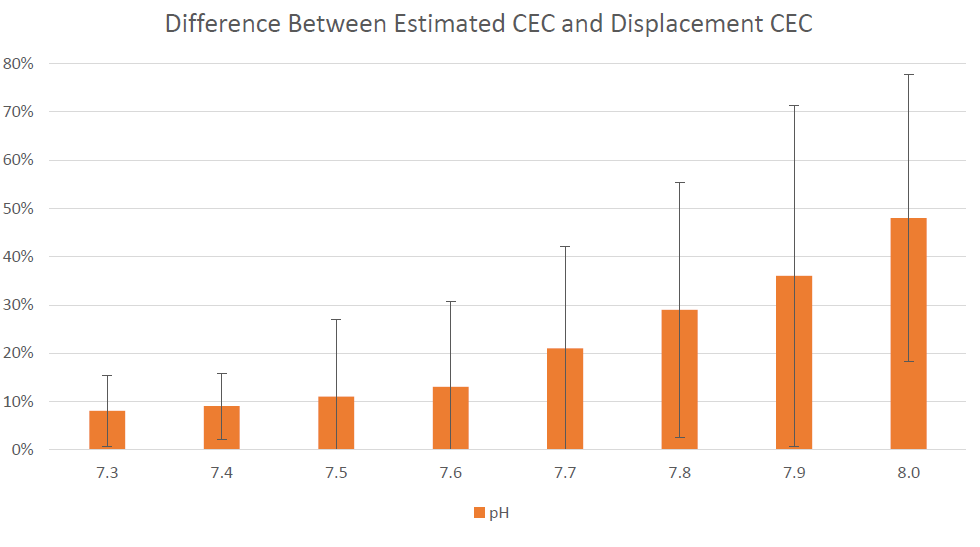Cation Exchange Capacity (CEC) is a measure of a soils ability to hold exchangeable cations. The CEC is impacted by many factors like soil type & organic matter. Generally speaking sandy soils have a lower CEC and clay soils have a high CEC.
In the lab there are two ways we can measure CEC:
Estimated CEC – This involves adding up the extracted base cations (K, Mg, Ca, Na) from a traditional extractant (Ammonium Acetate or Mehlich III) to derive a CEC number.
Displacement CEC – Involves washing the soil to remove existing cations and using an ‘index ion’ to determine the amount of exchange sites.
Are there differences between the two Measurements?
We analyzed a set of 667 samples by both methods to look at the differences at different pH values. Here is what we found:
Where the values from the two methods tend to diverge is at a pH of 7.3 or higher. At pH less than 7.3 there were still some samples with differing results, but not to the same degree as the samples that were over 7.3 pH. Extracting solutions like Mehlich III and Ammonium Acetate can overestimate plant available calcium (and magnesium to a lesser extent) that contain calcium and magnesium carbonate.
The data shows that the difference and the variance between the estimated and displacement CEC are quite large and become larger as you look at higher pH ranges.
What can we do with this information?
-Having a displacement CEC value in high pH soils can help us better understand a soils ability to provide nutrients to the crop.
-Understand which soils may contain calcium and magnesium carbonates.
-Properly characterize soil Cation Exchange Capacity, even in high pH soils.
Honeyland Ag Services complete soil test provides both estimated and displacement CEC. Click here for more information on our soil test.


